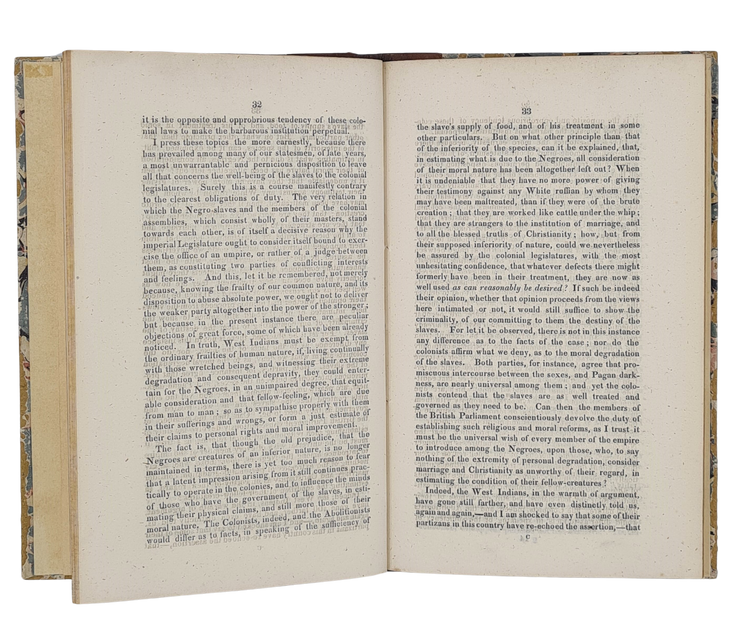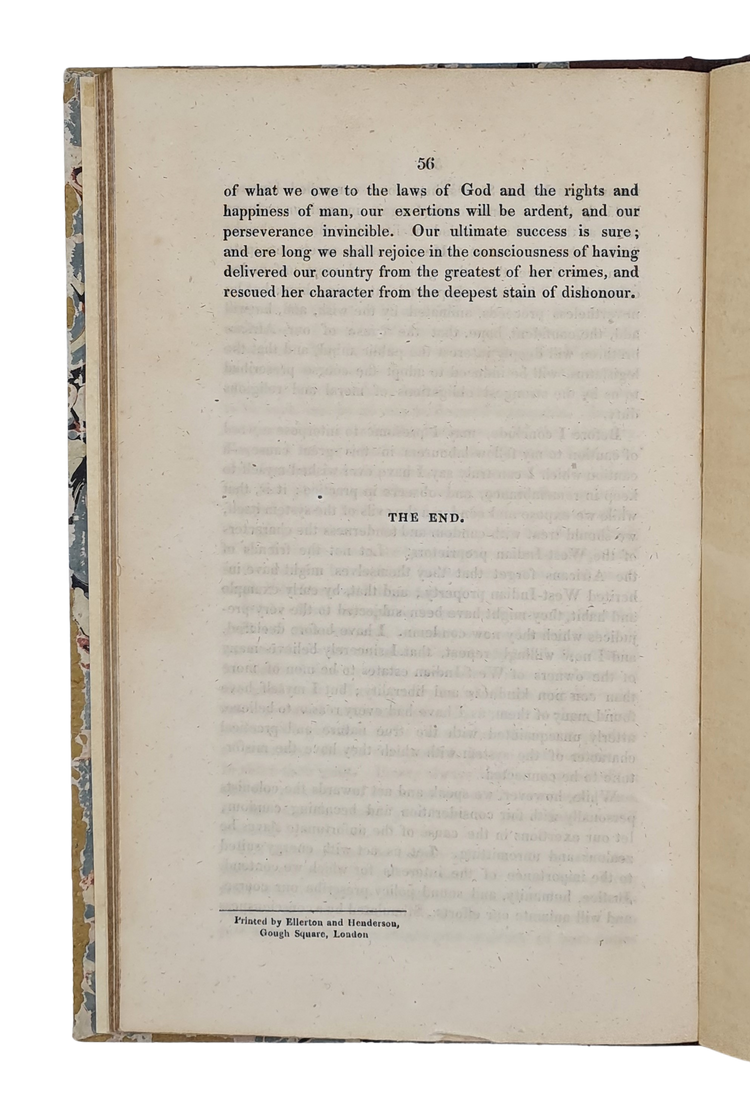Wilberforce, An appeal to the religion, justice, and humanity of the inhabitants of the British Empire, in behalf of the negro slaves in the West Indies. 1823.
- Regular price
- €2.600,00 EUR
- Regular price
-
- Sale price
- €2.600,00 EUR
- Unit price
- per
Slavery is a "national crime" and "stain of dishonour"
William Wilberforce (1759-1833).
An appeal to the religion, justice, and humanity of the inhabitants of the British Empire, in behalf of the negro slaves in the West Indies. […] A new edition.
London, J. Hatchard and Son, 1823. [Colophon:] Printed by Ellerton and Henderson, Gough Square, London.
8°. 56 pp.
Later half sheep with marbled sides, gold-tooled title on spine.
The pamphlet that catalyzed the formation of the Anti-Slavery Society and foresaw the disruptive impact slavery would have on future generations of society. Wilberforce, the Parliamentary leader in the abolition of Slavery, played a pivotal role in these efforts through this pamphlet. In it, he vividly portrays the dehumanizing influence of slavery in the British colonies as a "national crime" and "stain of dishonour." Wilberforce condemns the absence of religious instruction on Caribbean plantations and draws upon the travel accounts of Park and Golberry to illustrate the profoundly negative impact of enslavement in the 'New World' on Africans. Similar to Clarkson's 'Thoughts,' Wilberforce predicts that future generations will recoil in horror at the institution of slavery: "That such a system should so long have been suffered to exist in any part of the British Empire will appear, to our posterity, almost incredible." He calls for genuine progress towards freedom and the establishment of a "grateful peasantry" (CIRESC). Following the publication of Wilberforce’s Appeal, several critical responses emerged. However, it wasn't until 10 years later that the Slavery Abolition Act finally came into effect, on August 1, 1834.
Two editions of this Appeal were published in the same year, by the same publishers and printers, both in octavo format. Our edition is identified as “A new edition” on the title page, indicating its later publication. The difference between the editions lies solely in the size of the type: the “new edition” features smaller type across 56 pages, while the other edition spans (IV), 77 pages.
Condition: first and last leaves slightly browned, minor light spotting throughout, otherwise in very good condition.
Literature: Kress C1172; Sabin 103951.
CIRESC: Centre international de recherches sur les esclavages et post-esclavages. See: https://esclavages.cnrs.fr/
Couldn't load pickup availability
Share






Contact
Email: hugo@artemrarebooks.com
Phone: +31651042297
Visit us on appointment at:
Former US Embassy
Lange Voorhout 102
2514EJ
The Hague (The Netherlands)
Shipping address:
Nannie van Wehlstraat 51
2548MN
The Hague
The Netherlands






